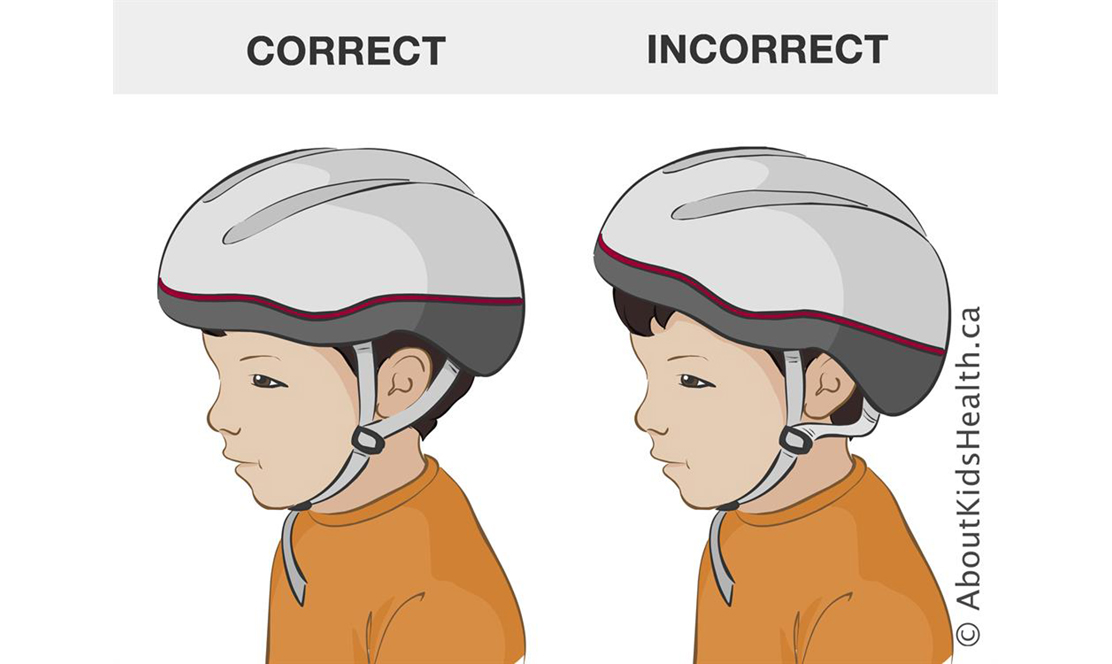How to fit a helmet correctly – tips from AboutKidsHealth
GUEST BLOG – Jessica Fishbein, AboutKidsHealthSummer is always a great time for kids to get some exercise by riding their bikes and playing sports outside. However, it is important for parents and caregivers to know that in addition to riding a bike, many outdoor sports and recreational activities also require a helmet.
How do helmets prevent injury?
Helmets can prevent injury by stopping a direct impact to the skull. They also allow the head to slow down more gradually, and spread the impact of a fall over more space.
Your child can protect themselves against head injury by wearing a helmet during these sports and activities:
• bicycling
• football
• hockey
• horseback riding
• ice skating
• off-road and all-terrain vehicle (ATV) driving
• rugby
• skiing and snowboarding

Helmet features
The materials and shape of a helmet allow for it to effectively prevent against injury. Make sure your child’s helmet has these features:
• Foam. While most helmets are made with foam, there are some that have another material that is crushable. After a fall or impact to your head, your skull will hit the foam first – slowing down over a few centimeres. After the impact, the foam is crushed – but the skull and brain are protected.
• Straps and padding. Only helmets that fit properly work — adjusting the straps and padding inside the helmet can make it fit your child more comfortably.
The materials and shape of a helmet allow for it to effectively prevent against injury.
How to fit a helmet correctly
It is important that your child wears their helmet correctly, as helmets that are not fastened properly will not protect the brain. Here are tips to ensure your child’s helmet fits them properly:
• A helmet must protect the brain’s frontal and occipital lobes, which are located in the front and back of the brain and are important for memory, decision-making and vision. So, a helmet must be centred on your child’s head and not slip forward or backwards. You can adjust where the helmet’s straps sit to ensure the helmet sits securely and does not tilt on an angle.
• While the helmet needs to be snug, it should not be too tight or fastened too high on your child’s head. The helmet should cover your child’s forehead without slipping from side to side. When the helmet is fastened, the straps should form a ‘V’ around the ears, meeting just underneath the ear. Helmet straps under the chin should not be loose, but still allow your child to open their mouth.
• Your child’s helmet should fit them when you buy it. It is not a good idea to buy a large helmet and have your child grow into it. You can use the small foam pads that come with the helmet to adjust the helmet’s fit and make it more comfortable for your child.
• Your child should not wear a hat or anything else underneath the helmet. Helmets will offer the best protection when they are worn directly on top of the head.
AboutKidsHealth is SickKids’ patient-education website and features more than 3,500 articles on a range of paediatric health topics. For more information on helmet safety, head injuries, and other topics, please visit www.aboutkidshealth.ca.


